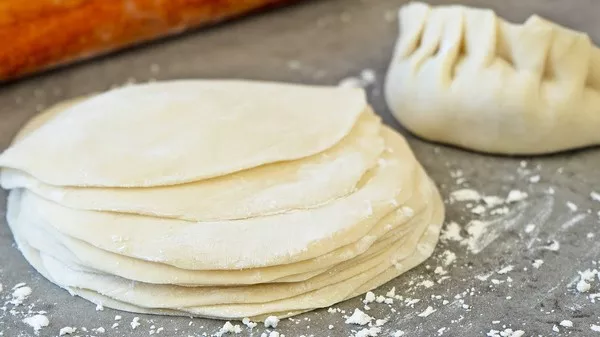Steamed dumplings, known for their delicate and flavorful filling encased in soft, pillowy wrappers, are a staple in many Asian cuisines. While the filling often steals the spotlight, the quality of the dumpling dough plays a crucial role in delivering that irresistible bite. Making steamed dumpling dough requires attention to detail and the right technique to achieve wrappers that are both tender and resilient. In this comprehensive guide, we’ll explore the art of crafting perfect steamed dumpling dough, step by step.
Understanding the Ingredients
The foundation of any good dough lies in its ingredients. Traditional steamed dumpling dough typically involves just a few basic components:
- All-Purpose Flour: This is the primary ingredient for the dough. All-purpose flour strikes a balance between protein content and gluten development, which is essential for creating a dough that is easy to work with and results in tender wrappers.
- Water: The moisture content in the dough is critical for gluten development and the overall texture of the wrappers. Use cold water, which helps control gluten formation and keeps the dough from becoming too sticky.
- Salt: Salt not only enhances the flavor of the dough but also helps regulate the gluten development, contributing to a more elastic and cohesive texture.
The Dough-Making Process
Step 1: Mixing the Ingredients
- Measure and Sift: Start by measuring the flour accurately. Sift it into a large mixing bowl to aerate and remove any lumps. This will ensure a smooth and uniform dough.
- Add Salt: Sprinkle salt evenly over the flour. Use a fork or your fingers to incorporate the salt into the flour.
- Gradually Add Water: Create a well in the center of the flour mixture. Gradually pour cold water into the well while mixing with a pair of chopsticks or a fork. Continue mixing until the dough starts to come together.
Step 2: Kneading the Dough
- Transfer to a Work Surface: Once the dough begins to form, transfer it onto a clean work surface lightly dusted with flour.
- Knead Until Smooth: Begin kneading the dough by pressing it down and away from you with the heel of your hand. Fold the dough over towards you, rotate it, and repeat. Continue kneading for about 8-10 minutes or until the dough becomes smooth and elastic.
- Rest the Dough: Shape the dough into a ball and cover it with a damp cloth or plastic wrap. Let it rest for at least 30 minutes at room temperature. This resting period allows the gluten to relax, making the dough easier to roll out later.
Step 3: Rolling Out the Wrappers
- Divide the Dough: After resting, divide the dough into smaller portions, about the size of a walnut. Keep the unused dough covered to prevent it from drying out.
- Rolling Technique: Take one piece of dough and flatten it into a small disc with the palm of your hand. Using a rolling pin, start rolling from the center of the disc outward, rotating the dough as you go. Aim for wrappers that are about 3 inches in diameter and slightly thicker at the center.
- Maintain Even Thickness: Be mindful of maintaining an even thickness throughout the wrapper to ensure uniform cooking.
Step 4: Filling and Folding
- Place the Filling: Add a small amount of filling (such as minced meat and vegetables) onto the center of the wrapper.
- Folding Techniques: There are various folding techniques depending on the type of dumpling you’re making (e.g., pleating, half-moon, or pouch-shaped). Fold and seal the edges tightly to prevent the filling from leaking during steaming.
Tips for Perfect Dumpling Dough
- Consistency is Key: Aim for a dough that is neither too wet nor too dry. Adjust the amount of water or flour if needed during mixing.
- Don’t Skip Resting: Allowing the dough to rest after kneading relaxes the gluten, making the dough easier to roll out and preventing shrinkage during cooking.
- Keep the Dough Covered: Cover the dough with a damp cloth or plastic wrap at every stage to prevent it from drying out, which can lead to cracked wrappers.
- Practice Makes Perfect: Making dumpling dough can be a bit of an art. Don’t be discouraged if your first attempts aren’t perfect. With practice, you’ll develop a feel for the dough and the techniques involved.
Conclusion
Mastering the art of making steamed dumpling dough is a rewarding endeavor that enhances your culinary repertoire. By understanding the role of each ingredient and perfecting the techniques involved, you can create homemade dumplings that rival those served in your favorite restaurants. So, gather your ingredients, roll up your sleeves, and embark on a journey to craft the perfect steamed dumpling dough that will delight family and friends alike. Happy cooking!
Related Topics:
How to Make Xiao Long Bao Dumplings

























